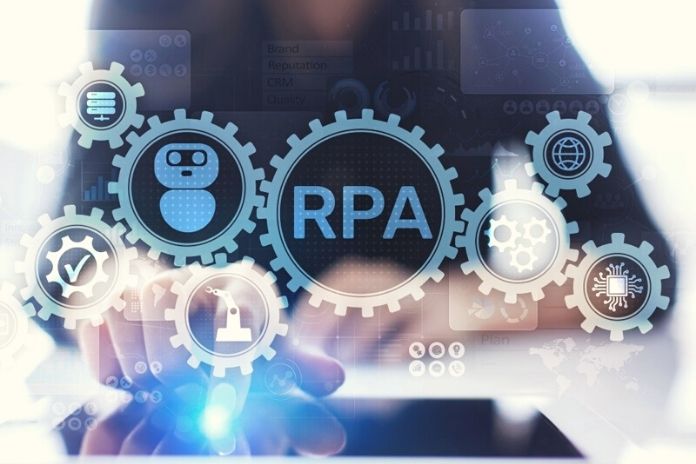Although the definition of robotic process automation (RPA) is relatively recent, the purpose of this concept has been pursued since the very beginning of the implementation of technology and robotization in the enterprise. What is this goal? The use of software to carry out activities currently performed by man, in a way that is undoubtedly faster, more constant, and more precise.
The introduction of robot software is a growing trend when you want to increase the quality and productivity levels of an operating cycle, making them the protagonists of any company’s digital transformation strategy. A company specializing in market research estimates that by the end of 2021, there will be 4 million robots dedicated to administrative, sales, and related operations.
What Is RPA, And What Is It Used For?
The technology RPA (English Robotic Process Automation ) includes the process automation subject to computer systems. In other words, it is software that uses digital robots to interact with programs in automatic mode. It is used to automate repetitive and seemingly simple administrative tasks such as connecting to web applications, copying, pasting, or renaming files, creating directories and folders, etc.
But what is robot software? Software robots or bots are computer programs installed on a PC, physical server, or virtual machine to perform human activities digitally. While RPA technology is mainly implemented to incorporate administrative departments, logistics also leverages the performance of robotic process automation. For example, it can speed up all those purely administrative tasks and even help control inventory.
What Activities Can Be Automated With The RPA?
Software robots can mimic the actions performed by humans based on predefined criteria and even artificial intelligence. They relieve employees of the most monotonous administrative tasks to dedicate themselves to the more strategic ones, bringing more value-added to the company.
Let’s briefly see what the main functions of RPA technology are:
- Interact with writing or web applications.
- Process documents in Excel, Word, PDF, etc.
- Manage files and folders: create, delete, update, move, etc.
- Use email: extract data, create and send emails.
- Export image text to get information.
- Run commands.
RPA technology integrates continuous improvement techniques that always identify new processes subject to robotization and learn from errors to achieve maximum efficiency.
Advantages Of RPA Technology In Logistics
Even the logistical advantage of the enormous benefits of the automation robotics process. Operational cycles in which companies leverage robot software to gain a competitive edge include:
- Tracking and shipment status. RPA technology allows you to check the status of shipments and receive notifications on pick-up times, warn of any delays or issue an electronic delivery receipt via automatically generated messages.
- Stock control. Robotic process automation can simplify stock control.
- Purchase management. Purchases are made through automated criteria: the purchase’s price, quantity, or frequency.
- Supply and demand planning. Based on predefined criteria, the software robots automatically analyze the history of sales data or market indicators to make predictions about future supply and demand. In this way, the quantity of products necessary to carry out all activities and maintain an adequate safety stock is guaranteed.
- Smart documentation. Documents are exchanged quickly and without errors: invoice processing, debt collection, data exchange, etc.
RPA technology is proving to be a cost-effective tool for companies as they digitize their supply chain while reducing costs and improving employee and customer satisfaction levels.
RPA In Warehouse Management
The digital transformation of processes implies integrating the most suitable systems for business needs ( ERP, MES, WMS, etc.) and using the latest generation technologies to obtain better results. In this sense, robotic process automation is applied in automated warehouse management. It is possible to use the RPA by implementing a WMS such as, for example, the Easy WMS warehouse management software.
The WMS automates warehouse activities that would otherwise have to be done manually by an operator: it simplifies inventory management, automates slotting or location strategies, supports order preparation activities, ensures traceability, and so on. Warehouse management software uses RPA technology to automate notifications across various operating cycles such as order receipt or preparation. In addition, it allows you to synchronize the relationship between the WMS and other applications within the warehouse, including ERP, TMS ( Transportation Management System ), or more complex production systems.
Towards A Fully Robotic Management
The many advantages of RPA technology in terms of a company’s productivity and logistical efficiency are undeniable. Its implementation limits business costs, allows employees to dedicate themselves to more complex activities and improves customer satisfaction. Indeed, the idea of automating all these processes to improve times and results is tempting. However, it is necessary to know your needs and then formulate an optimal logistics strategy.
For this reason, it is advisable to contact a specialized supplier who carefully analyzes the customer’s needs to offer him the most personalized solution possible. It is an expert in intelligent storage solutions and logistics software adapted to each customer’s profile. Contact us if you want to optimize your supply chain and take advantage of the benefits of automation.
Also Read: Embracing Automation Can Make Your Business More Profitable

